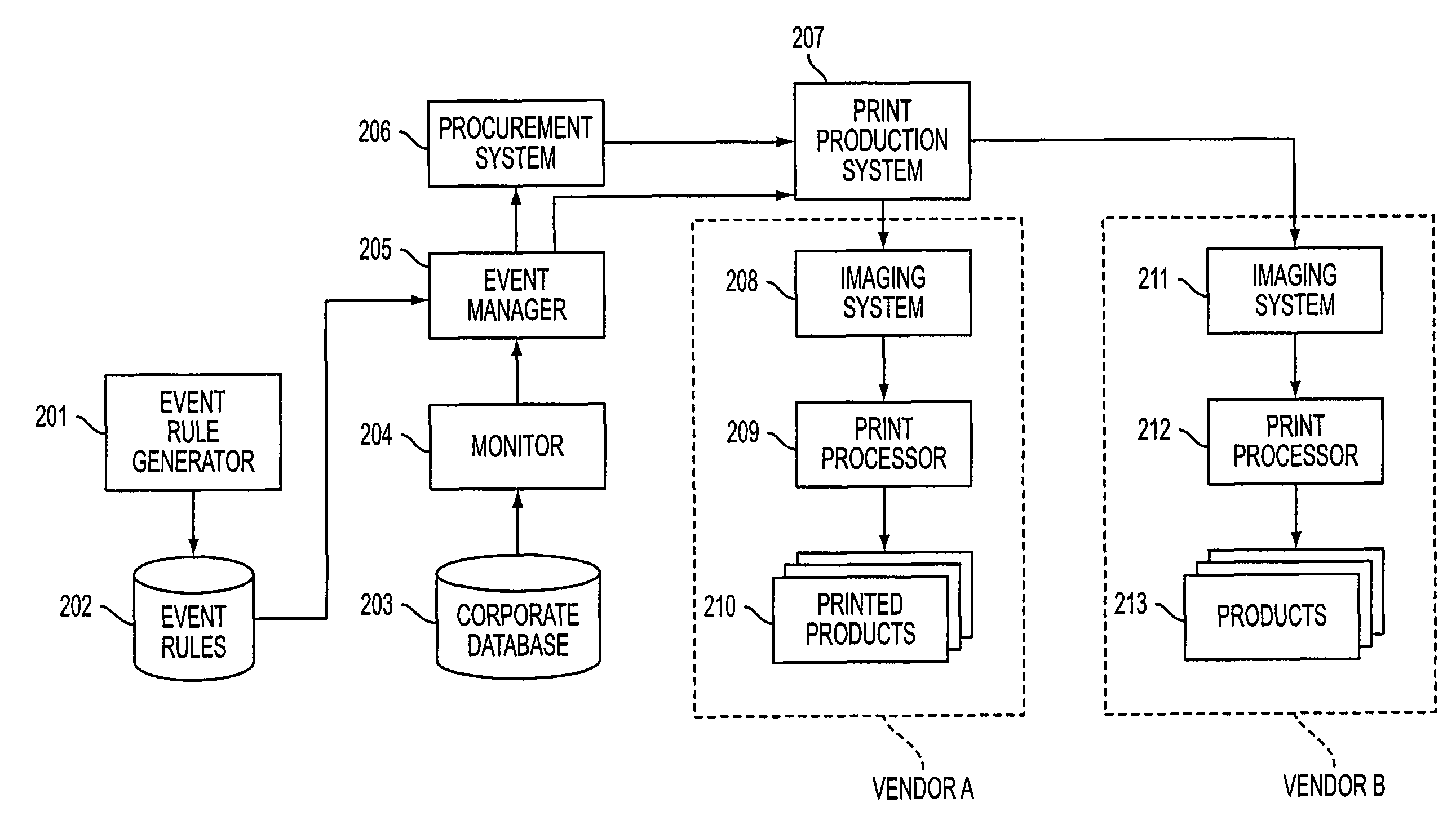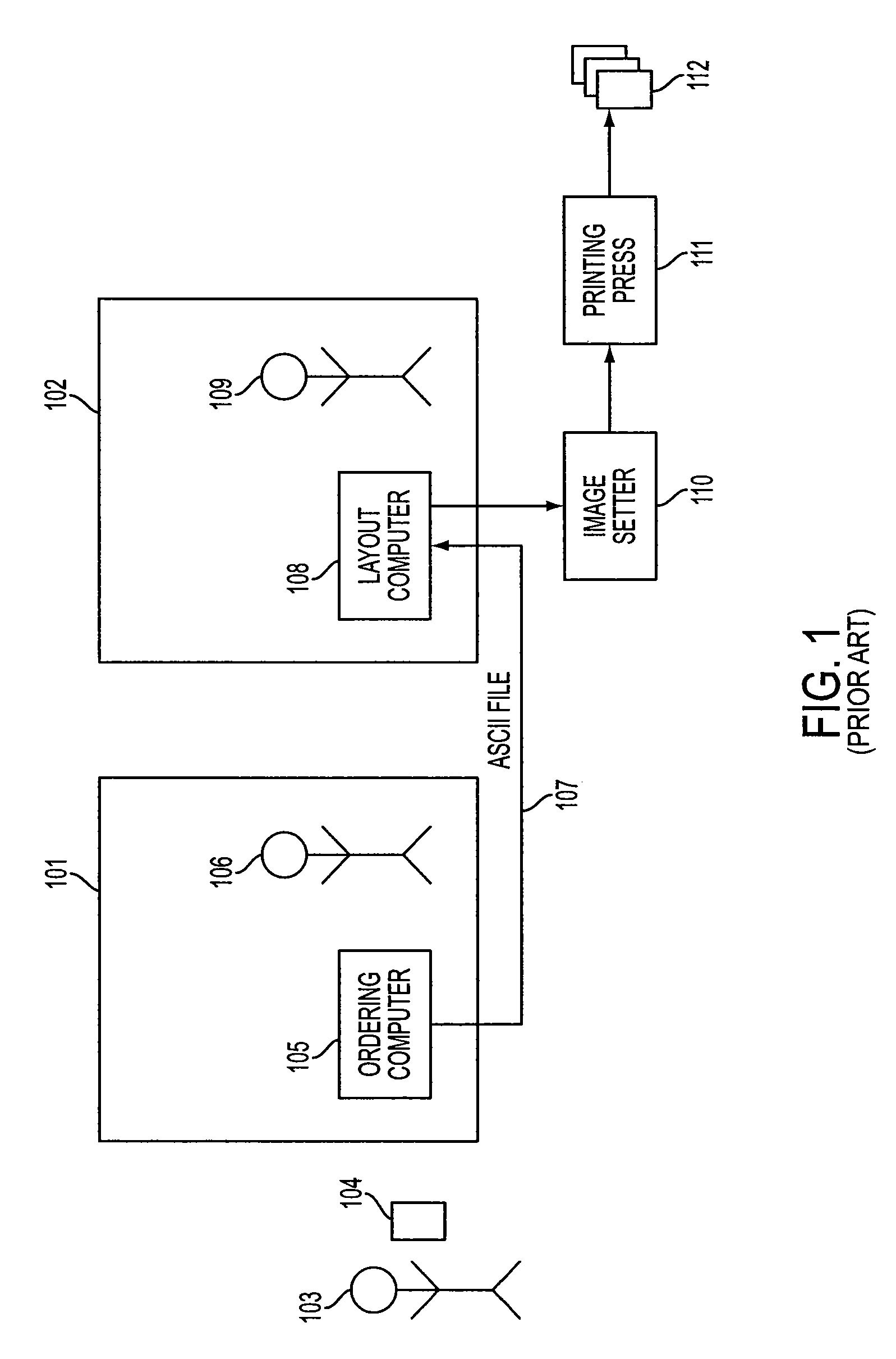System and method of using a sales management system to generate printed products
a technology of sales management system and sales management system, applied in the field of system and method of using a sales management system to generate printed products, can solve the problems of repeated steps incurring extensive costs, errors may be introduced into one or more steps, and simple printing jobs can take days or even weeks
- Summary
- Abstract
- Description
- Claims
- Application Information
AI Technical Summary
Benefits of technology
Problems solved by technology
Method used
Image
Examples
Embodiment Construction
[0034]FIG. 2 shows a system that employs various principles of the present invention. As shown in FIG. 2, an event rule generator 201 is used to generate one or more event rules that are then stored into an event rules database 202. The term “event rule” will be used to refer to a rule that generates an action in response to a business-related event, such as the addition of a new employee to a corporation; a change in inventory levels for a product; or the receipt of an order to manufacture a product. Other rules based on parameters such as the passage of time could of course be defined. Although it is expected that different companies will have different event rules tailored for their particular business needs, it is of course possible to use the same set of rules for more than one company.
[0035]According to the invention, event rules can be defined using any of various techniques such as a graphical user interface or a natural language tool. At least some of the rules may specify ...
PUM
 Login to View More
Login to View More Abstract
Description
Claims
Application Information
 Login to View More
Login to View More - R&D
- Intellectual Property
- Life Sciences
- Materials
- Tech Scout
- Unparalleled Data Quality
- Higher Quality Content
- 60% Fewer Hallucinations
Browse by: Latest US Patents, China's latest patents, Technical Efficacy Thesaurus, Application Domain, Technology Topic, Popular Technical Reports.
© 2025 PatSnap. All rights reserved.Legal|Privacy policy|Modern Slavery Act Transparency Statement|Sitemap|About US| Contact US: help@patsnap.com



